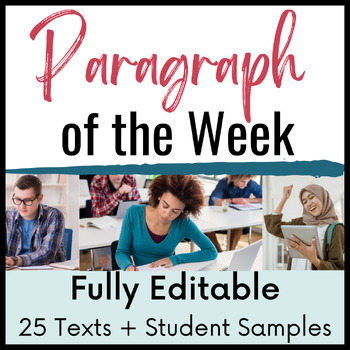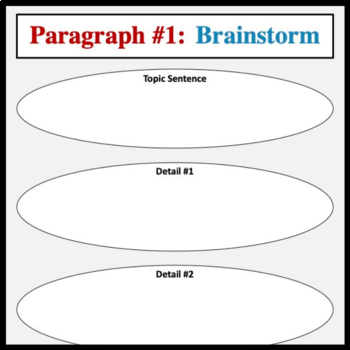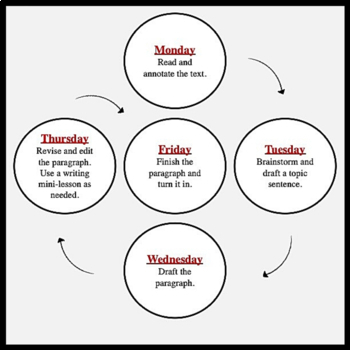Paragraph of the Week: 25 Texts, 25 Student Samples for Grades 9-12
- Zip
What educators are saying
Description
This bundle contains 25 prompts for "Paragraph of the Week" in grades 9-12. Each prompt contains a passage from a text and a prompt. The texts range from poetry to prose to non-fiction. The paragraph prompts range from persuasive to descriptive to personal narrative to literary analysis.
This bundle is FULLY EDITABLE and includes a student sample for EACH prompt to use as a model.
Paragraph of the Week is a teacher-created, student-tested, step-by-step process for teaching students how to write paragraphs. It provides weekly practice in sentence writing and paragraph writing.
Each weekly prompt breaks the writing process down into manageable pieces that help to prevent students from feeling overwhelmed or reluctant to write. The format also allows for your advanced writers to focus on improving their craft.
The 25 prompts included here begin with a stimulus text and a prompt. Students then use the graphic organizer to brainstorm ideas, and this graphic organizer outlines the content of the paragraph itself.
Here is a broad outline of how to implement paragraph of the week in high school:
1. Monday– Read and annotate the given text.
2. Tuesday– Brainstorm ideas and draft a topic sentence.
3. Wednesday– Draft the paragraph.
4. Thursday– Revise and edit the paragraph. Use a writing mini-lesson as needed.
5. Friday– Revise and edit. Final draft due.
Teachers can then use the “Paragraph Quick Grade Rubric” to assess each student’s writing.
Use these writing activities for whole group lessons, writing centers, sub plans, remote learning tasks, homework, and assessments.
PERKS FOR YOU:
*Join the Bespoke ELA Blog to gain access to 100+ FREE resources that are not here on TpT!
* Be sure to click the "FOLLOW" button that is located next to my picture in the profile so that you can hear about sales, new products, and freebies!
* Don't forget to leave feedback to EARN POINTS that turn into cash towards future purchases!
KEY WORDS: writing workshop, literary analysis, essay writing, revision, editing, process, persuasive writing, mini-lesson, paragraph writing, paragraph of the week
==============================================================================
Related Blog Posts:
Acronyms for Literary Analysis: A Comprehensive List of Strategies
Characterization Activities for ANY TEXT!
Teaching Students How to Write Commentary for the Literary Analysis Essay
Commentary for Literary Analysis: Four Square Strategy for Success
The Essay Shaping Sheet: Friend or Foe?
8 Ways to Help Students Break Through Writer’s Block
You might also like:
30 MENTOR SENTENCES with Writing Revision for GOOGLE SLIDES
Comment Cards for Academic Essay Writing: Helping Students Give Quality Comments
Commentary vs. Paraphrasing: A Mini-lesson for Literary Analysis
Follow Bespoke ELA for UPDATES, ANNOUNCEMENTS, & FREEBIES





